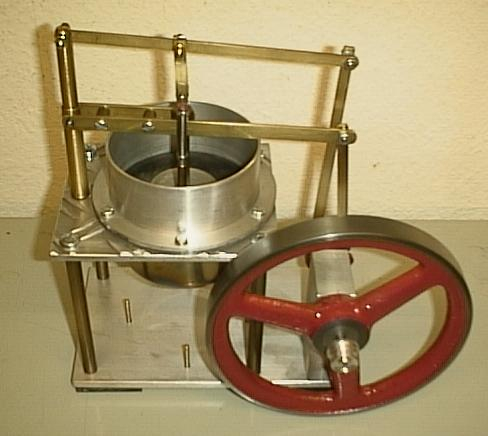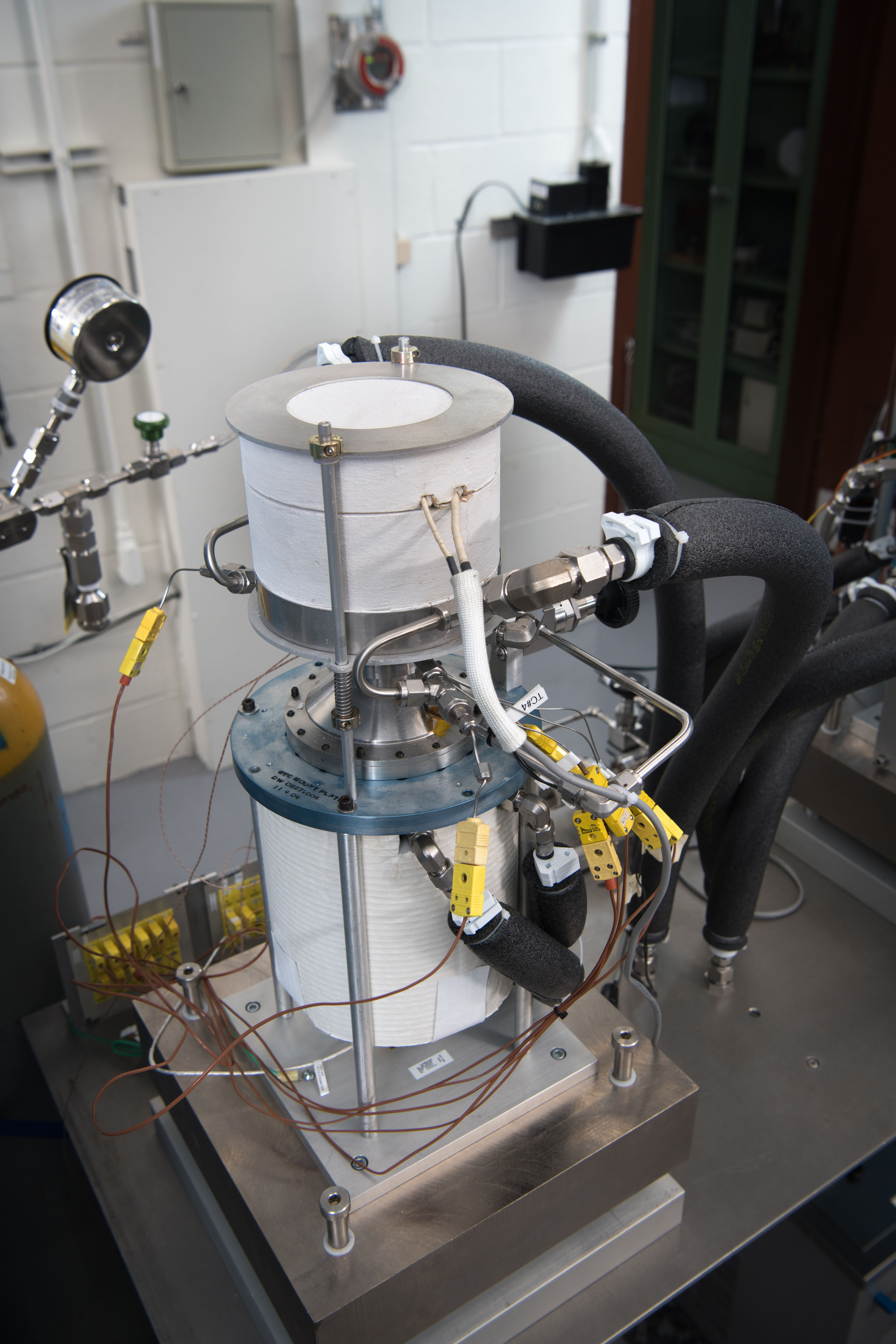steve_bank
Diabetic retinopathy and poor eyesight. Typos ...

Stirling engine - Wikipedia
A Stirling engine is a heat engine that is operated by the cyclic compression and expansion of air or other gas (the working fluid) between different temperatures, resulting in a net conversion of heat energy to mechanical work.[1][2]
More specifically, the Stirling engine is a closed-cycle regenerative heat engine, with a permanent gaseous working fluid. Closed-cycle, in this context, means a thermodynamic system in which the working fluid is permanently contained within the system. Regenerative describes the use of a specific type of internal heat exchanger and thermal store, known as the regenerator. Strictly speaking, the inclusion of the regenerator is what differentiates a Stirling engine from other closed-cycle hot air engines.[3]
In the Stirling engine, a gas is heated and expanded by energy supplied from outside the engine's interior space (cylinder). It is then shunted to a different location within the engine, where it is cooled and compressed. A piston (or pistons) move the gas to the correct places within the engine, at the correct time in the cycle, and extracts mechanical power from it. The gas oscillates between these heating and cooling spaces, changing temperature and pressure as it goes. A unique feature is the regenerator, which acts as a temporary heat store by retaining heat within the machine rather than dumping it into the heat sink, thereby increasing its efficiency.
The heat is supplied from the outside, so the hot area of the engine can be warmed with any external heat source. Similarly, the cooler part of the engine can be maintained by an external heat sink, such as running water or air flow. The gas is permanently retained in the engine, allowing a gas with the most-suitable properties to be used, such as helium or hydrogen. There are no intake and no exhaust gas flows so the machine is practically silent.
The machine is reversible so that if the shaft is turned by an external power source a temperature difference will develop across the machine; in this way it acts as a heat pump.
The Stirling engine was invented by Scotsman Robert Stirling[4] in 1816 as an industrial prime mover to rival the steam engine, and its practical use was largely confined to low-power domestic applications for over a century.[5]
Contemporary investment in renewable energy, especially solar energy, has given rise to its application within concentrated solar power and as a heat pump.

Applications of the Stirling engine - Wikipedia
Solar power generation
Main article: Solar-powered Stirling engine
Dish Stirling from SES
Placed at the focus of a parabolic mirror, a Stirling engine can convert solar energy to electricity with an efficiency better than non-concentrated photovoltaic cells, and comparable to concentrated photovoltaics. On August 11, 2005, Southern California Edison announced an agreement with Stirling Energy Systems (SES) to purchase electricity created using over 30,000 Solar Powered Stirling Engines over a twenty-year period sufficient to generate 850 MW of electricity. These systems, on an 8,000 acre (19 km2) solar farm will use mirrors to direct and concentrate sunlight onto the engines which will in turn drive generators. "In January, 2010, four months after breaking ground, Stirling Energy partner company Tessara Solar completed the 1.5 MW Maricopa Solar power plant in Peoria, Arizona, just outside Phoenix. The power plant is composed of 60 SES SunCatchers."[26] The SunCatcher is described as "a large, tracking, concentrating solar power (CSP) dish collector that generates 25 kilowatts (kW) of electricity in full sun. Each of the 38-foot-diameter collectors contains over 300 curved mirrors (heliostats) that focus sunlight onto a power conversion unit, which contains the Stirling engine. The dish uses dual-axis tracking to follow the sun precisely as it moves across the sky."[26] There have been disputes over the project[27] due to concerns of environmental impact on animals living on the site. The Maricopa Solar Plant has been closed.[28]
How Stirling engines work.
This page explains how Stirling engines work. You’ll learn what can make them so efficient, how they can appear to run on hot water or ice and more.
Stirling Engine Power Generator | RedHawk Energy
Qnergy’s PowerGen Remote Power Generators combine high-efficiency Free Piston Stirling Engine (FPSE) technology. Please visit our website to learn more about it.

